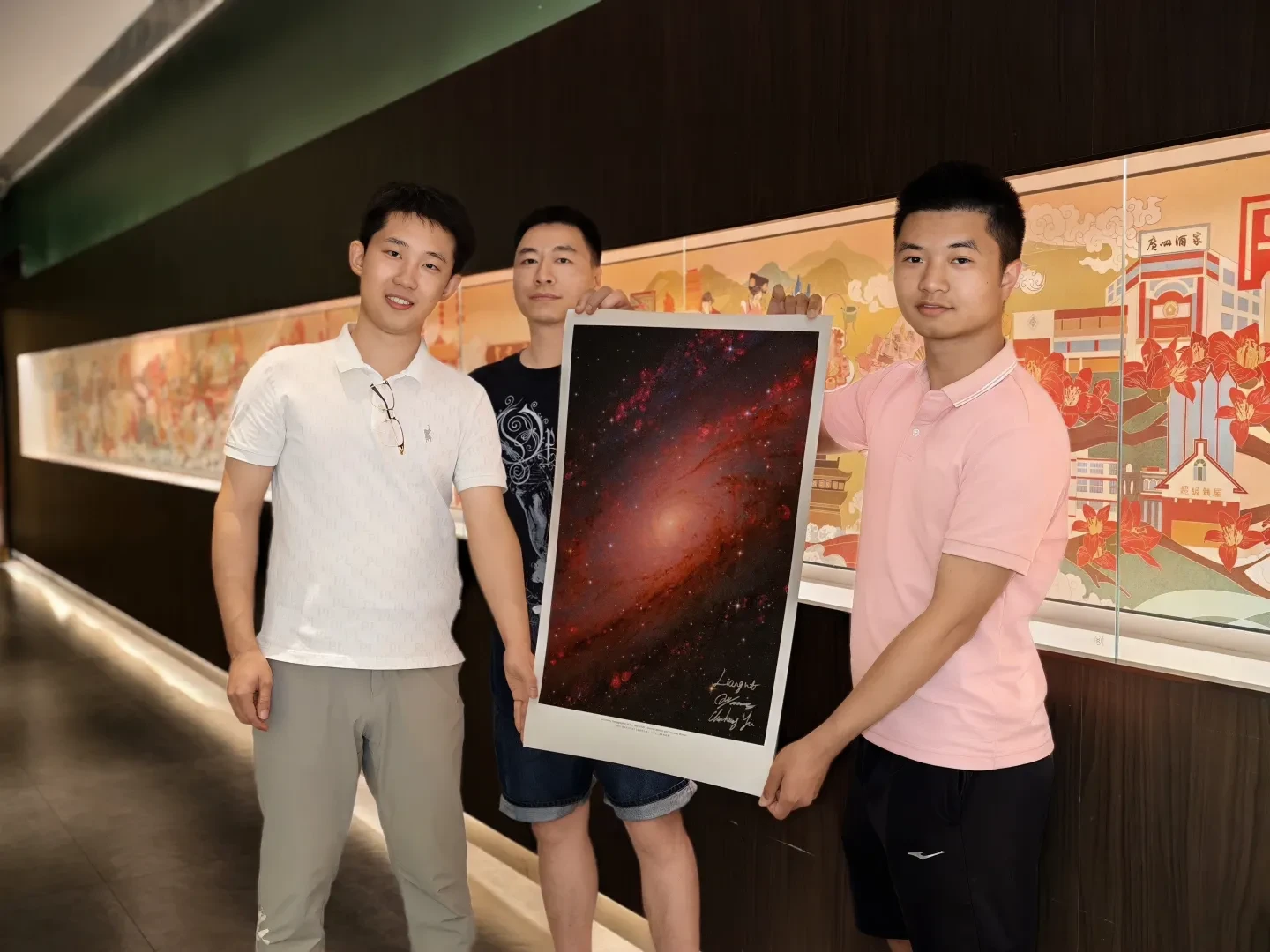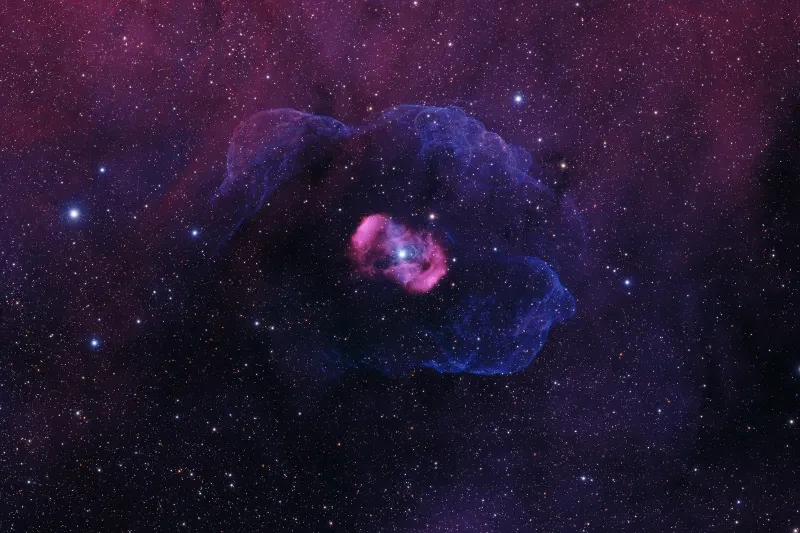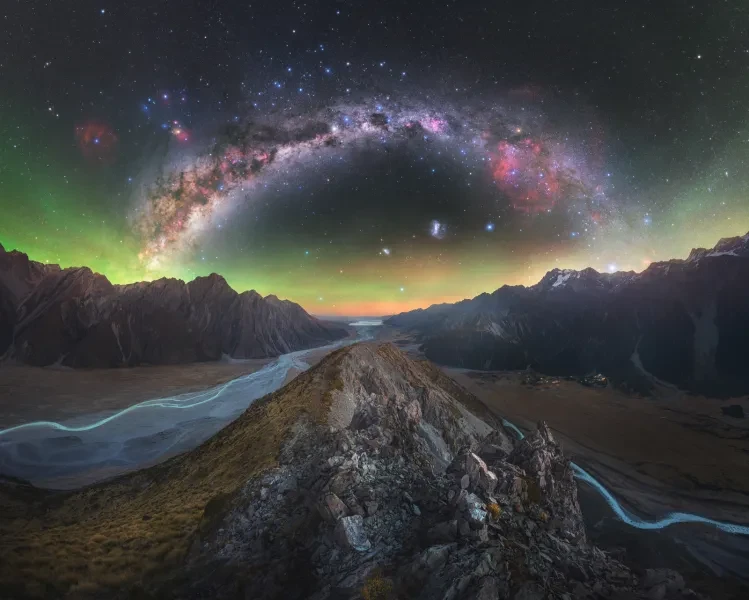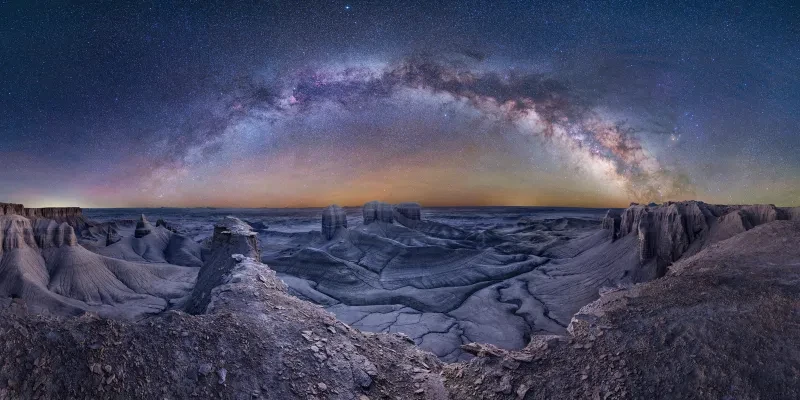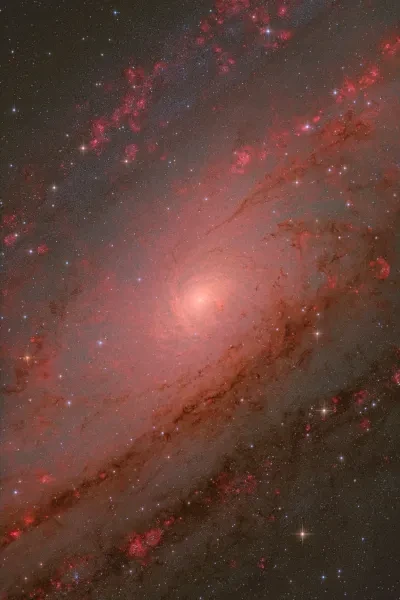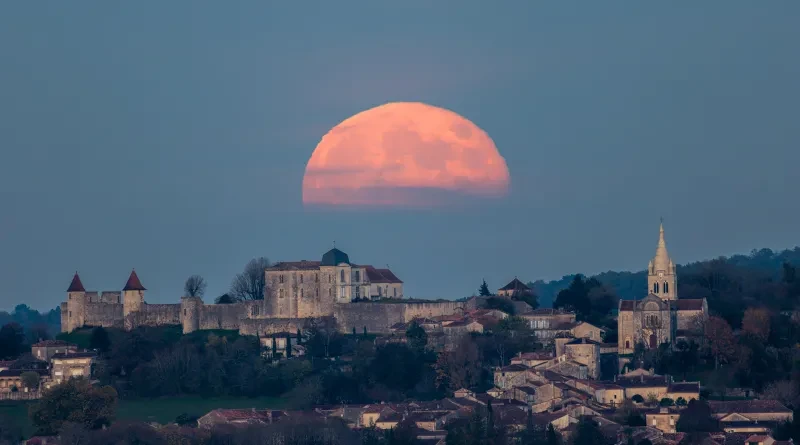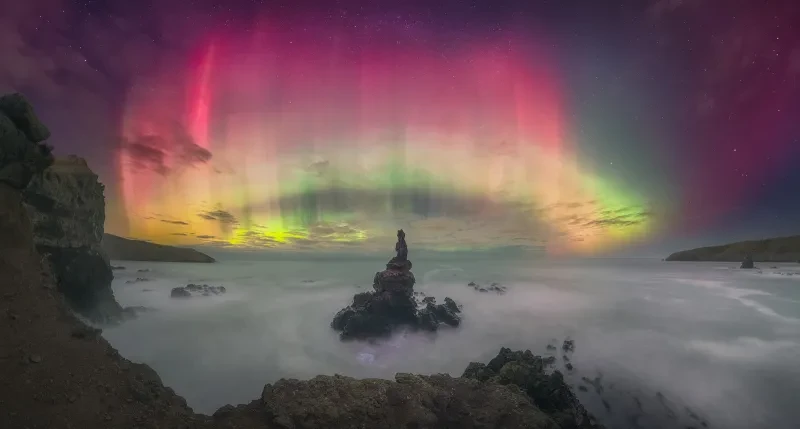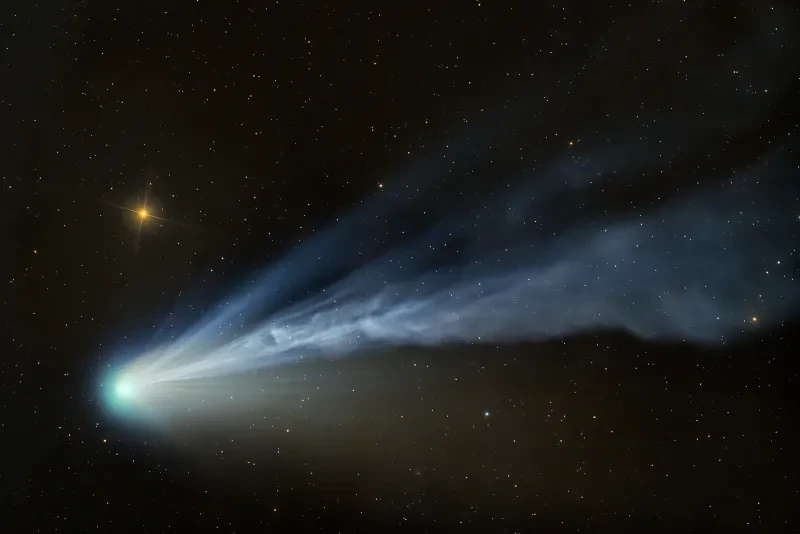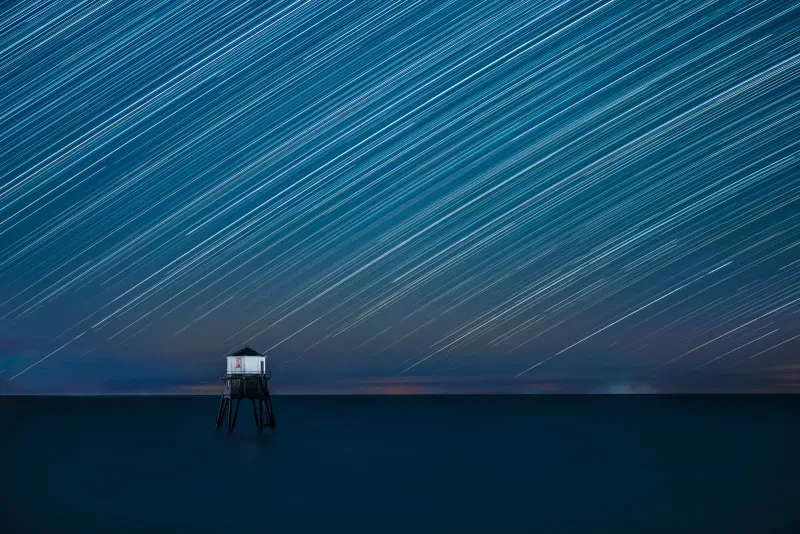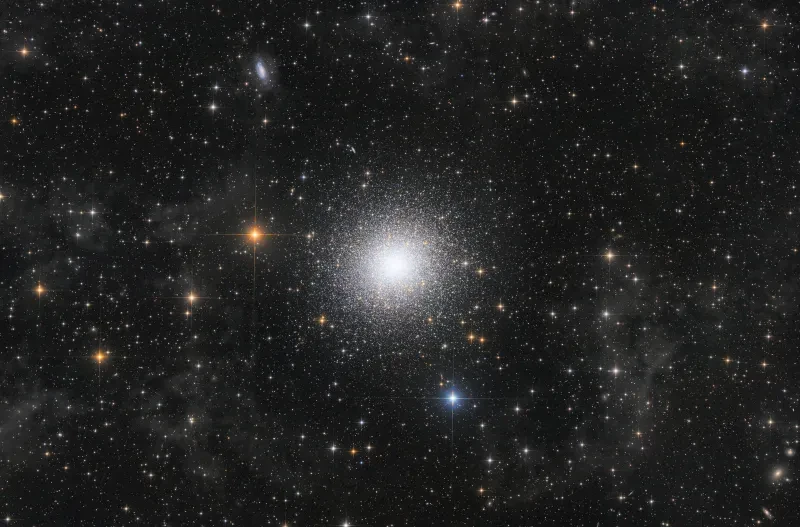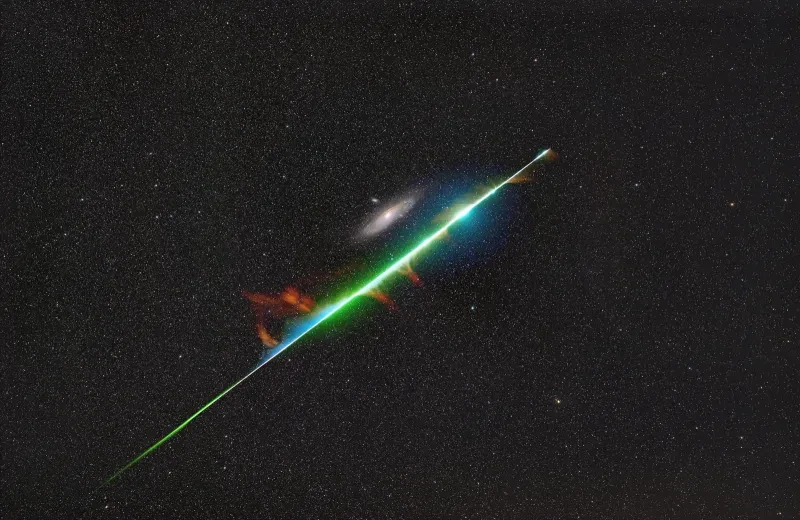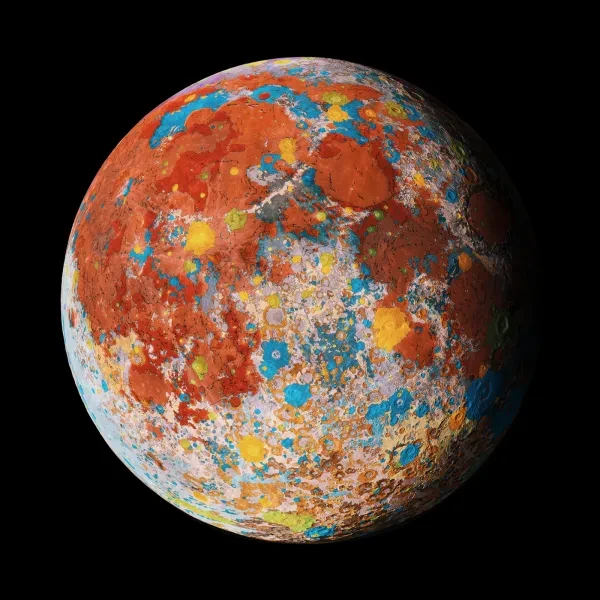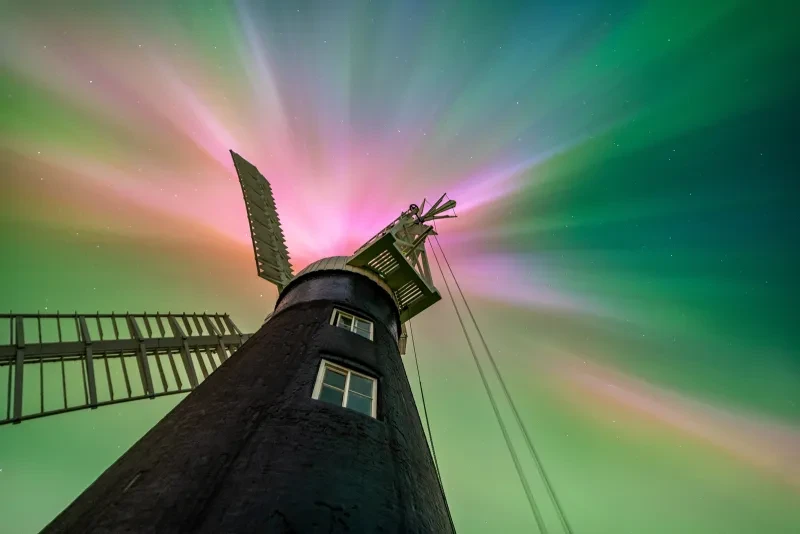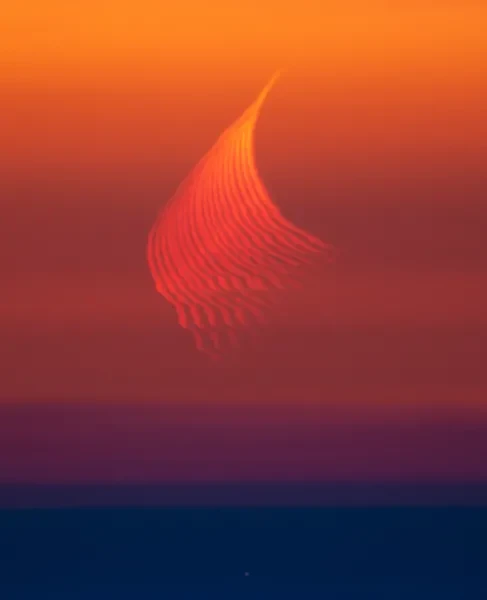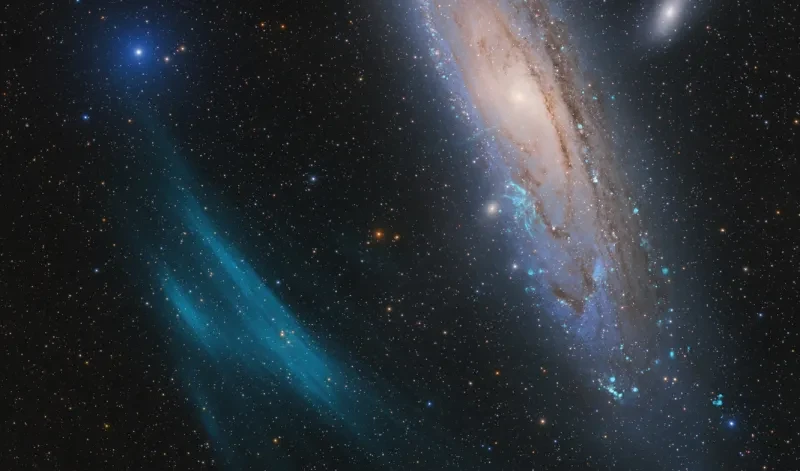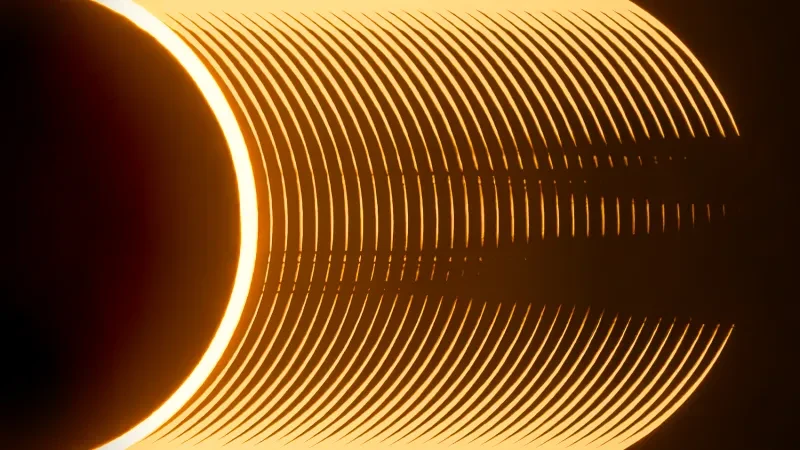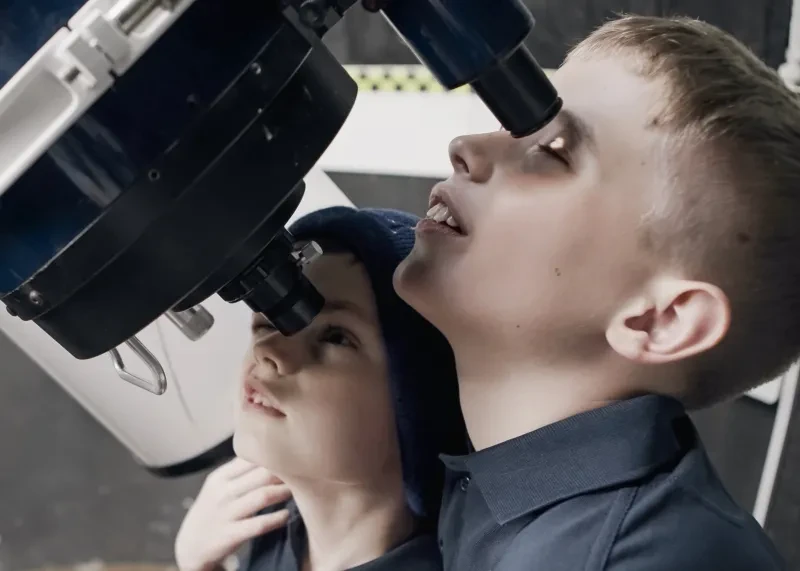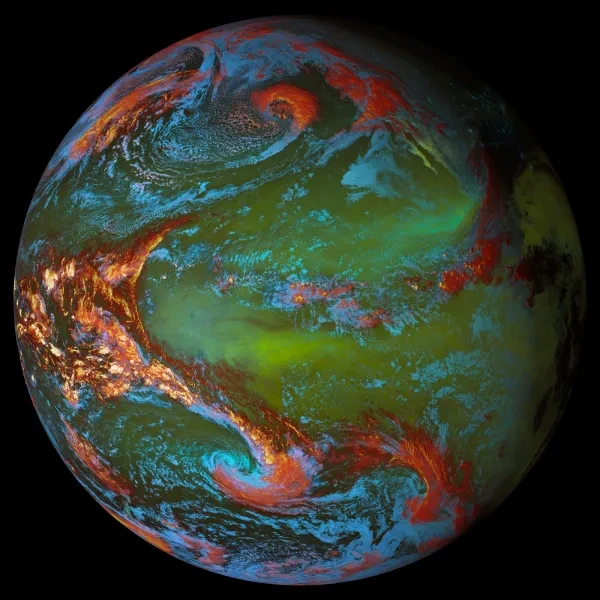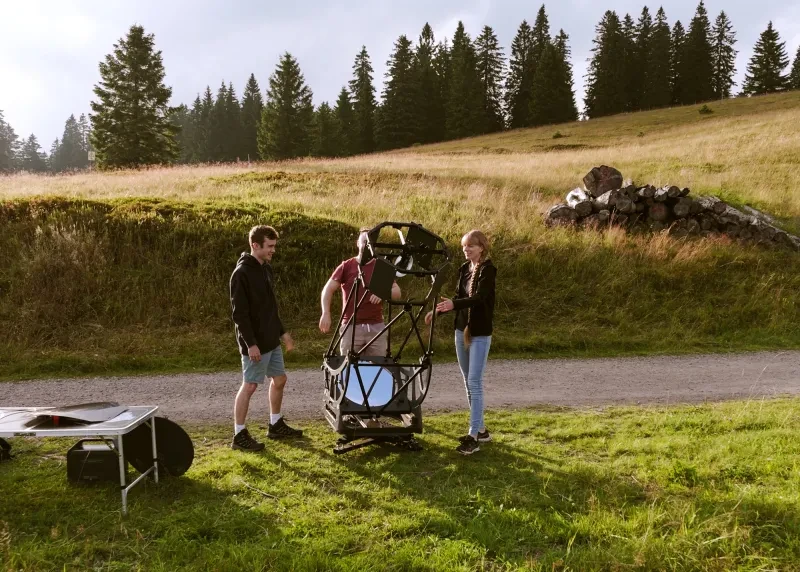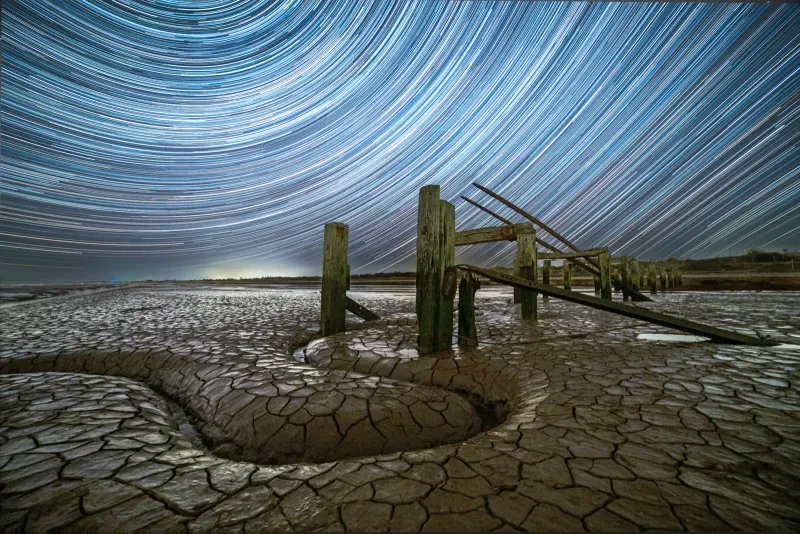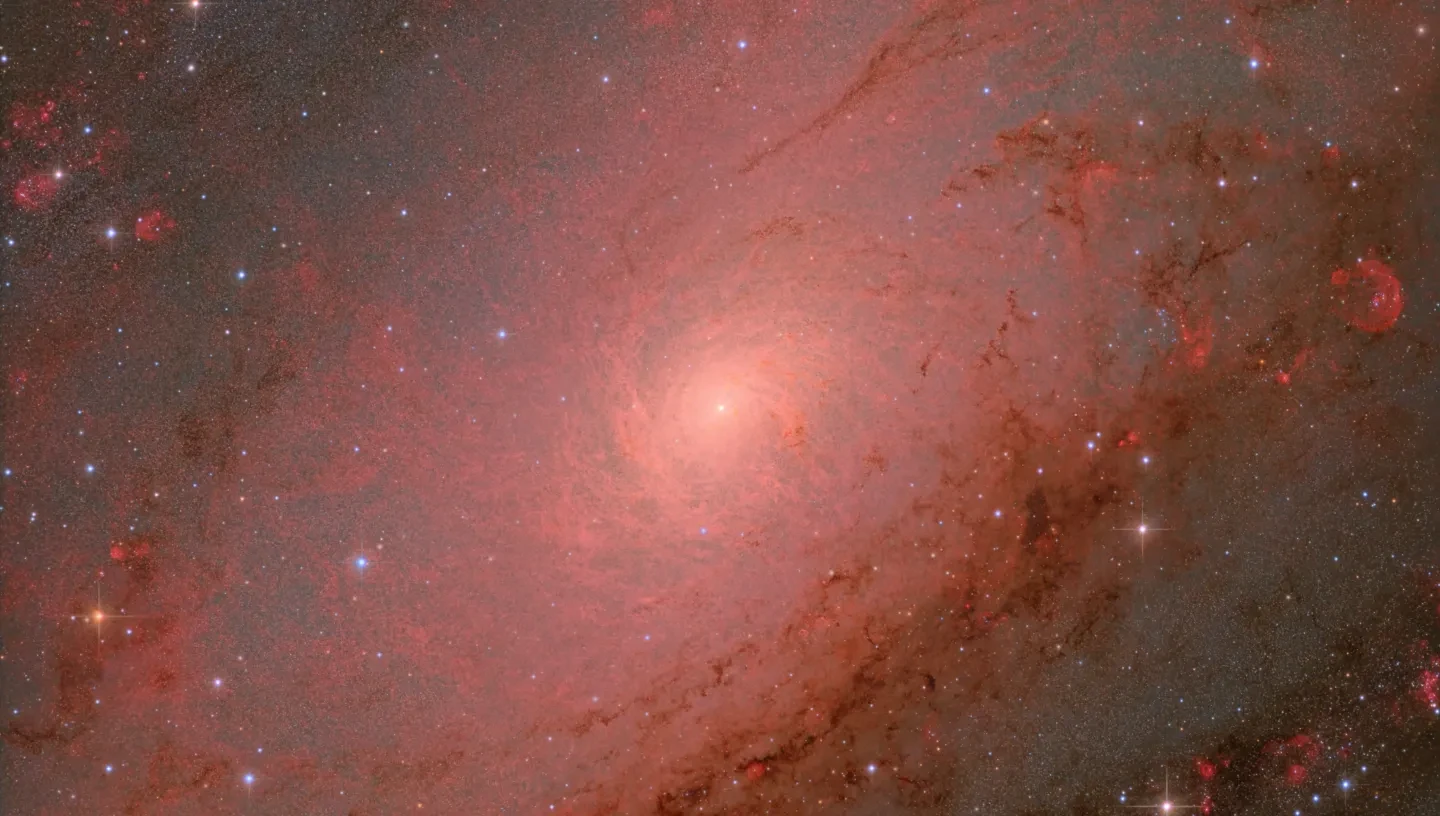
The Andromeda Galaxy is one of the most photographed targets in the night sky. Despite this, three photographers have succeeded in presenting this familiar favourite in a striking new light.
Weitang Liang, Qi Yang and Chuhong Yu’s photo The Andromeda Core focuses on revealing the intricate structure of the luminous core of the galaxy.
The photographers say, “This image is not just about capturing Andromeda’s beauty - it is an effort to bring out the dynamic processes shaping its evolution, from the birth of new stars to the influence of interstellar structures near its core.”
The photo was crowned the overall winner in the ZWO Astronomy Photographer of the Year 2025 competition thanks to its incredible depth of detail, skilful post-processing, dramatic framing and bold choice of colour palette.
Learn more about the image - including what it shows, how it was taken and why it was awarded the top prize.

The Andromeda Core
By Weitang Liang, Qi Yang and Chuhong Yu
“Not to show it all − this is one of the greatest virtues of this photo. The Andromeda Galaxy has been photographed in so many different ways and so many times with telescopes that it is hard to imagine a new photo would ever add to what we’ve already seen. But this does just that, an unusual dynamic composition with unprecedented detail that doesn’t obscure the overall scene.”
- Competition judge László Francsics
What does the photo show?
The Andromeda Core shows the central region of the Andromeda Galaxy (also known as M31), which is the nearest large galaxy to us at around 2.5 million light years away.
Andromeda is a barred spiral galaxy like our own Milky Way. It’s made up of an outlying spiral structure of dust, gas and stars connected by a dense, bar-shaped concentration of bright giant stars in the galactic core.
This isn’t a simple target to capture on camera. Competition judge and Royal Observatory astronomer Dr Ed Bloomer explains: “The cores of galaxies are often extremely bright, and unless the astrophotographer is careful it can overwhelm the image and obscure that lovely detail.”
However, he says, “What we have here is an image which preserves an astonishing amount of detail right towards the very heart of Andromeda, which is extremely difficult to do.”
A decade of practice
One member of the trio, photographer Weitang Liang, says that his fascination with Andromeda goes way back: “I first photographed M31 with my first deep-sky telescope and was immediately amazed by its giant galactic disk. Over the past decade I have used refracting and reflecting telescopes ranging from 5 to 16 inches to capture different fields of M31.”
He continues, “What truly impressed me and initiated this project was the first image of the Andromeda Galaxy taken with my largest Newtonian telescope, which I installed in my own observatory. The 16-inch Newtonian was able to capture countless tiny and faint stars. The stars in the spiral arms were extraordinarily stunning.”
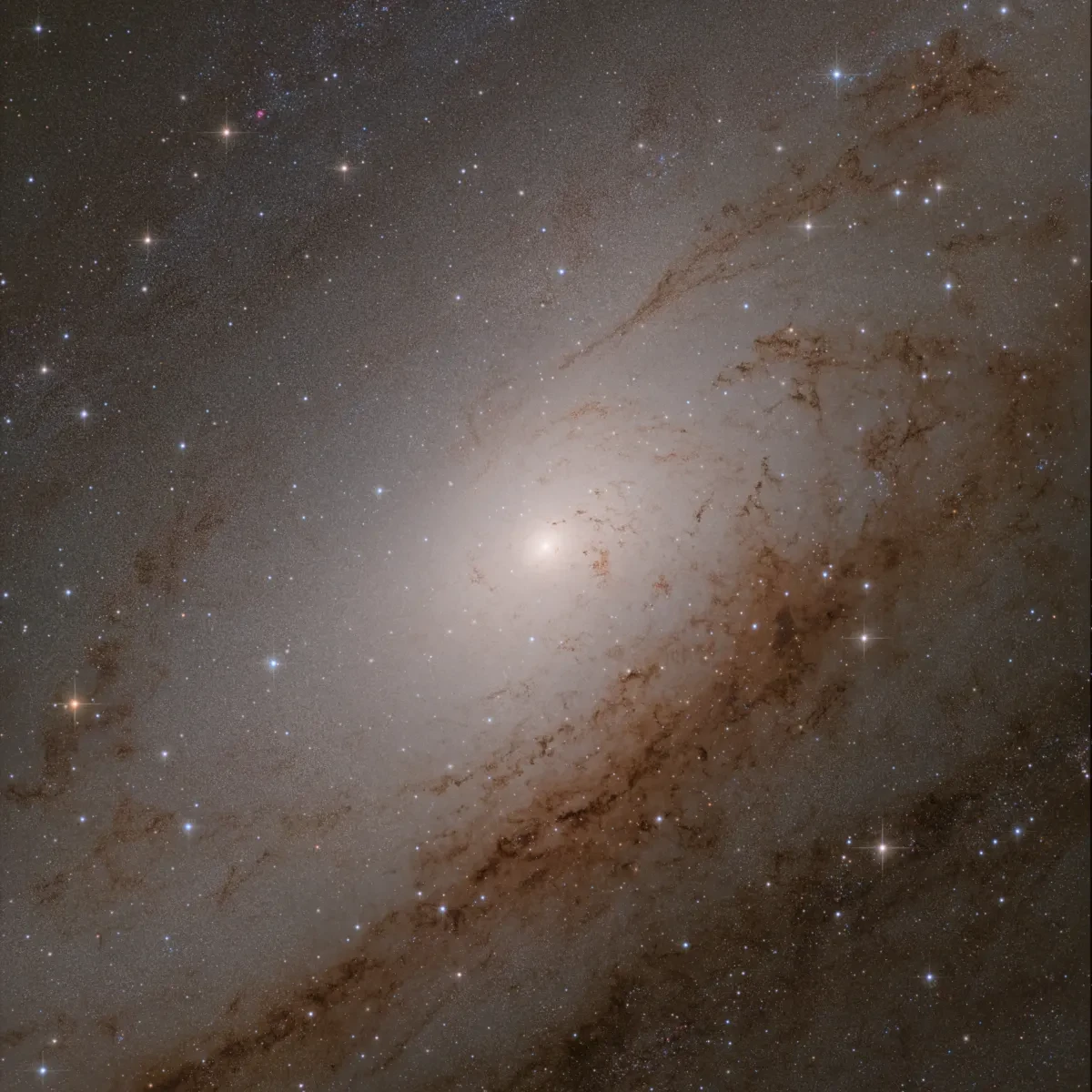
How was the photo taken?
The Andromeda Core was taken from AstroCamp Observatory in Nerpio, Spain.
Weitang Liang and Qi Yang collected the data. Weitang says, “In total we collected 15 hours of LRGB [luminance, red, green and blue] data, which revealed remarkable resolution in the tiny stars on the galactic arms.”
A luminance (L) filter captures the fine details, sharpness and structure of a target, while the red (R), green (G) and blue (B) filters add the colour. When you combine these together, you get a detailed, full-colour photo.
Weitang continues, “Two key features stood out in my mind: sharp stars - even the faintest ones - and detailed dust structures near the core. These are exactly the areas in which my partners, Chuhong Yu and Qi Yang, excel. We invited Chuhong to join the project and take charge of processing the star fields.”
Exploring hydrogen: looking at H-alpha light
H-alpha is a deep red wavelength of light emitted by hydrogen, the most common element in the Universe and a vital building block of stars and emissive nebulae (clouds of gas and dust that emit their own light).
Dr Ed Bloomer explains, “Different physical processes produce light at different wavelengths, so different filters can be used to create images revealing those activities, or the elements producing that light."
Weitang says, “Although we already had the LRGB data, we also wanted to highlight the H-alpha structures in this region.”
He continues, “We tried several times to collect H-alpha data to reveal the rich details in the arms. At that time, the core did not attract my attention because of relatively lower resolution. But now, with a telescope capable of achieving the best detail, we decided to revisit the core - and finally obtained 23 hours of H-alpha data.”
The photographers explain why they did this: “By carefully isolating and processing the H-alpha channel, we were able to enhance the visibility of these ionised gas clouds, which trace ongoing star formation.
“The contrast between these glowing regions and the surrounding dust lanes adds depth and dimension, offering a fresh perspective on this familiar galaxy.”
Picking a colour palette
Weitang explains the bold red colour palette: “The H-alpha spiral arms in the core were the most important feature we wanted to highlight, so we chose a striking colour that would stand out from the star field. At the same time, we also wanted to preserve the natural beauty of the star field.”
“We presented the spiral H-alpha arms in a reddish tone, finally choosing a palette where the red includes hints of orange.”
Dr Bloomer says: “The colouring is interesting. It’s not the usual colour palette, and the dominant red is powerful, but we [the judges] thought it was not uncomfortably so.”
The final image fulfilled all of the team's expectations, and more. Weitang recalls: “At first, we were overwhelmed with excitement. Later, we calmed down and set the image aside for a few weeks. When we revisited the image after some time, we were still fully satisfied with the result. That’s when we knew it was ready to share.”
Why was this image selected as the winner?
As for why this image was worthy of the top prize in the ZWO Astronomy Photographer of the Year 2025 competition, Dr Bloomer says, “We [the judges] were struck immediately by the technical achievement of retaining so much detail so close to the core, so we knew it was worth some careful consideration.
“We chatted quite a bit about the framing: it's quite a close crop into the centre, but we also adored that the image had such a dramatic diagonal structure.”
Dr Bloomer says each judge had their own reasons for picking the image as the winner.
“To my mind, it's a really striking image from afar but also contains enough detail to stand up to close scrutiny. In short, it took a lot of skill to capture the data at all, and good judgement to present it in such a cool way!”
When the photographers found out they had won the top prize, Weitang says, “The excitement was beyond words! We are truly grateful to the ZWO Astronomy Photography of the Year competition. It brings us great joy to share the beauty of the Universe with everyone.”
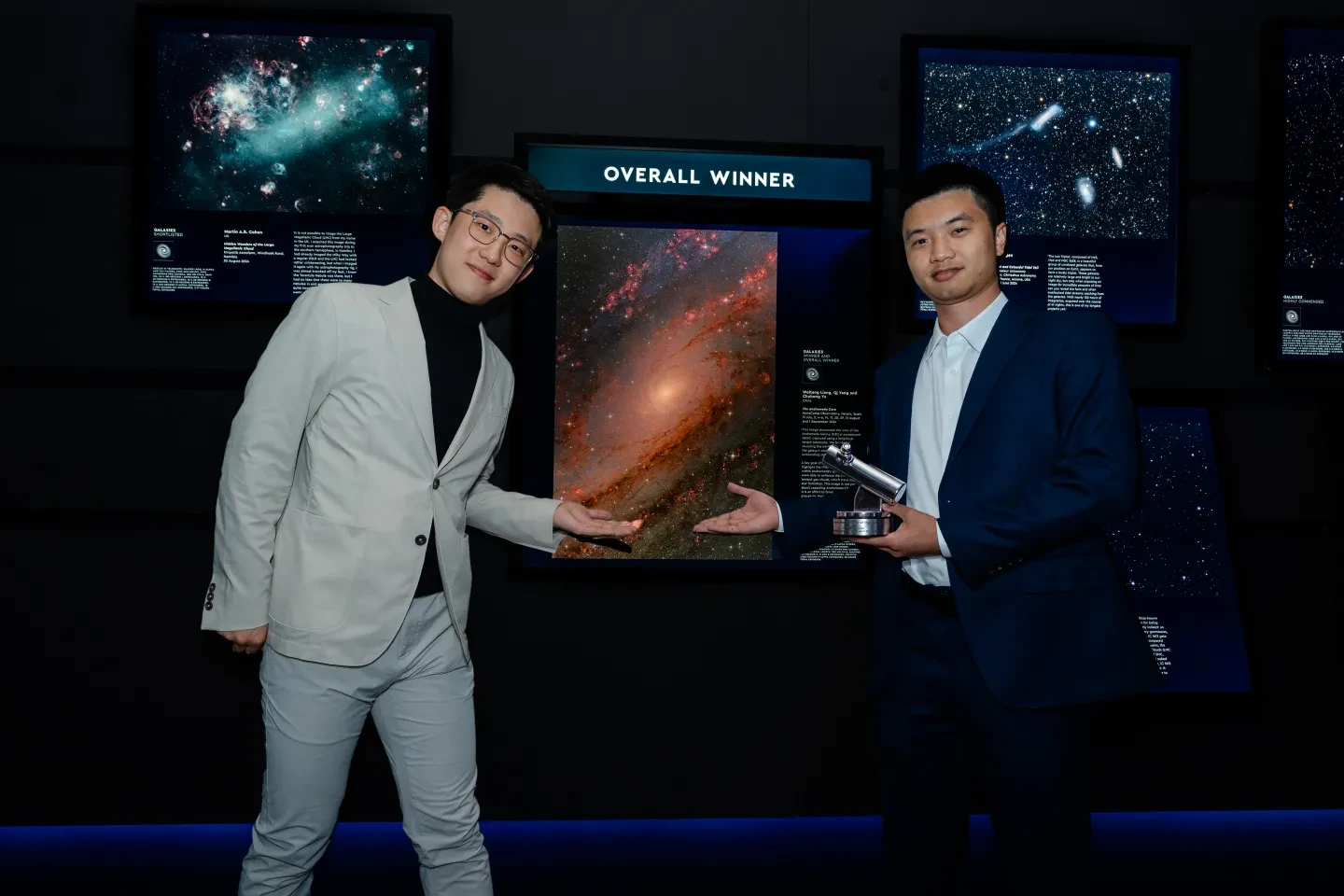
Keep up to date
Subscribe to the Royal Observatory's space newsletter for insights into the Astronomy Photographer of the Year exhibition at the National Maritime Museum, and a closer look at the breathtaking shortlisted images.
